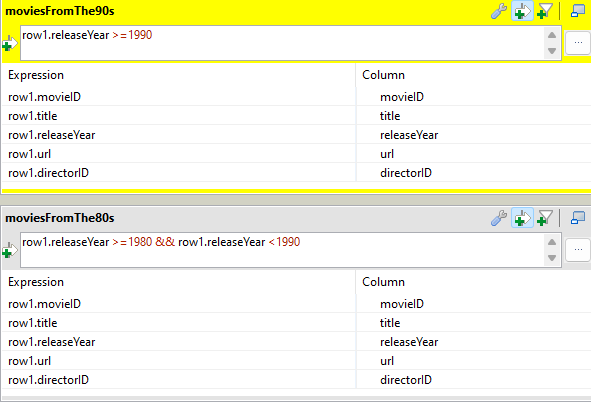Configuring a tMap component filter by years
The tMap component provides many possibilities of joining and filtering your data, including numerically.
About this task
- Download the following file: metadata_movies_directors.zip.
- In the Repository, expand Metadata then right-click File delimited and click Import items.
- Select Select archive file: then click Browse to select metadata_movies_directors.zip.
- Select movies 0.1.
- Click Finish.
You can also learn how to create a metadata definition (see Creating a metadata definition for the tMap component).
Procedure
Results
What to do next

Did this page help you?
If you find any issues with this page or its content – a typo, a missing step, or a technical error – let us know how we can improve!


